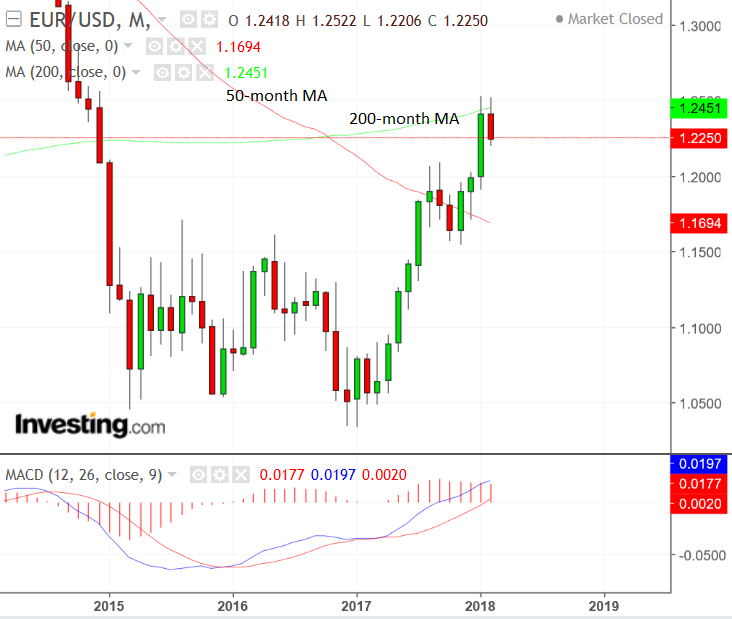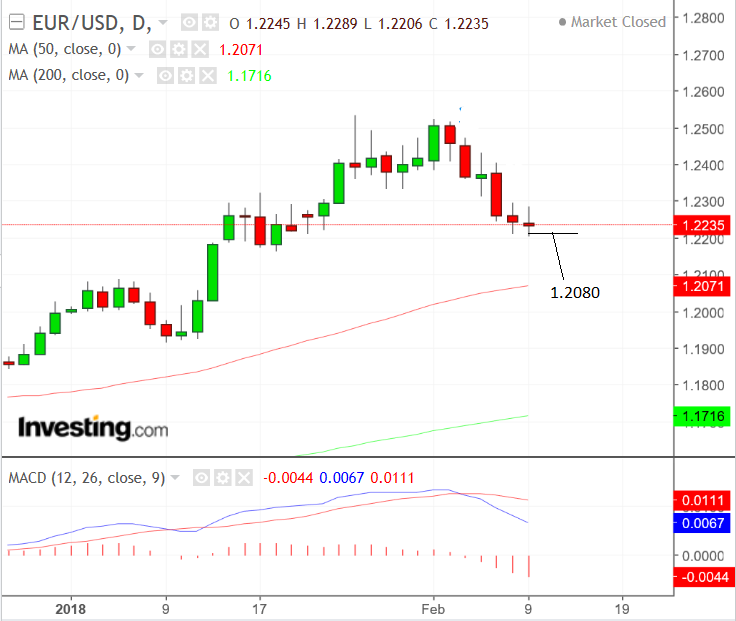EUR/USD Forecast for the Week Ahead

© Lisa L, Adobe Stock
The Euro has started a new short-term bear trend against the US Dollar we believe and more downside could now be expected.
Last week we saw the Euro-to-Dollar exchange rate fall from 1.2457 to 1.2235, and our technical studies suggest that during that time it entered a new short-term downtrend.
Technical studies aim to try and antcipate future moves in an exchange rate by observing recent price action which tends to offer clues as to how the market is structured. This allows us to anticipate where buying and selling interest lies which in turn hints at where trends might start and end.
This trend for EUR/USD is now expected to extend further with a break beneath the 1.2206 lows leading to an extension down to a target at 1.2080, just above the 50-day moving average (MA):
Large moving averages are levels of dynamic support and resistance where strongly trending prices often stall, pull-back or even reverse trend sometimes.
This is due to the increased buying and selling around them as traders and investors often use moving averages in their decision-making.
On the monthly chart of EUR/USD the exchange rate has touched the 200-month moving average at 1.2450 (green line on chart below) and pulled back illustrating the impact of major moving averages on price.

On the daily chart, the MACD momentum indicator in the bottom panel is falling rapidly in line with the new downtrend, providing another bearish signal for the Euro.
Get up to 5% more foreign exchange by using a specialist provider to get closer to the real market rate and avoid the gaping spreads charged by your bank when providing currency. Learn more here.
Data and Events for the Euro
Eurozone GDP data is the main release in the week ahead when it comes out on Wednesday, February 14, at 10.00 GMT.
The consensus expectation amongst analysts is a 2.8% rise in the fourth quarter of 2017 from 2.7% previously.
The strong economic growth in the Eurozone is a major reason why analysts are so bullish the Euro, so an unexpectedly good result on Wednesday could lead to a rise in the Euro, whilst a lower-than-forecast result could put downward pressure on the single currency.
The other key release, which is out at the same time as GDP data, is December industrial production, which is forecast to rise by 4.2% compared to a year ago, from a 3.2% in November.
Data and Events for the Dollar
Inflation, retail trade, and the Michigan sentiment survey will be the main releases for the Dollar in the coming week.
Headline inflation is scheduled for release on Wednesday, February 14, at 13.30 GMT, and is forecast to show a 1.9% rise in January from a year ago, down slightly from 2.1% in December.
On a monthly basis, it is forecast to show an accelerated 0.3% rise against the 0.1% in the previous month.
Core inflation is forecast to show a 1.7% rise from 1.8% previously.
Inflation is a driver of interest rates which in turn influence currencies, so a rise in inflation will strengthen the Dollar.
The reason for this is that higher interest rates draw greater inflows of foreign capital attracted by the promise of higher returns.
Retail Sales for January are released at the same time and are forecast to show a 0.5% rise on a monthly basis from 0.4% previously.
On a year-on-year basis, analysts will be looking to see if it can continue the strong gains seen in December when it rose by 5.4% compared to December 2016.
Finally, Michigan consumer sentiment in February is released at 15.00 on Friday, February 16, and is forecast to fall slightly to 95.5 from 95.7 previously.
Get up to 5% more foreign exchange by using a specialist provider to get closer to the real market rate and avoid the gaping spreads charged by your bank when providing currency. Learn more here.





